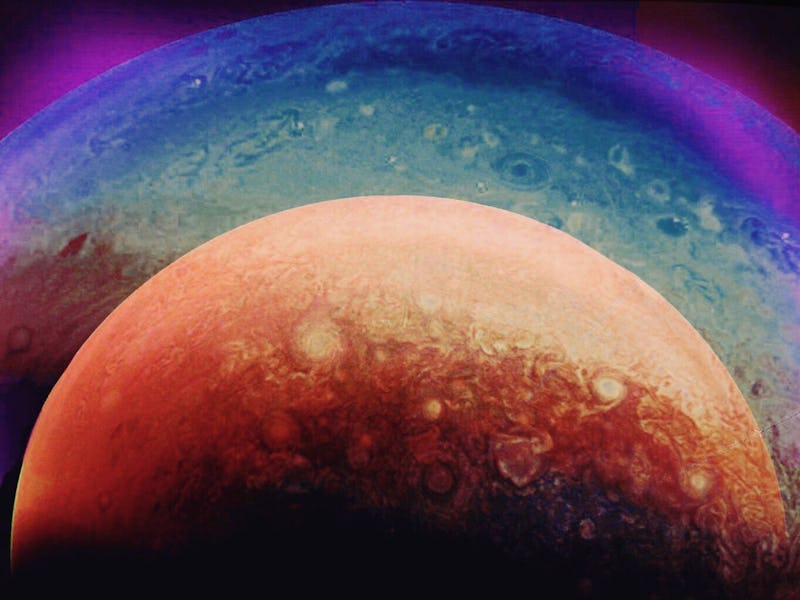NASA’s Juno spacecraft is currently in close orbit of Jupiter, peering below its dense clouds to study this gas giant in as much detail as possible — without getting fried up the planet’s massive radiation in the process. The harsh environment, however, is worth it — a quick perusal through the images collected by the JunoCam and processed by the public demonstrates just what a richly vivid, beautiful thing the largest planet in the solar system is.
Juno was launched in August 2011, and it entered Jupiter’s orbit last July. The mission is tasked with studying Jupiter’s formation and evolution by determining how much water is in Jupiter’s atmosphere, studying Jupiters atmospheric properties and mapping Jupiter’s magnetic and gravity fields. Last December, Juno started to orbit the planet for the third time and photographed one of Jupiter’s pearls during its flyby.
Citizens can participate in Juno’s mission too. NASA started the JunoCam community, where amateur astronomers can download images acquired by JunoCam, process them, and upload them for the world to see. Visitors can also vote to help NASA decide the future of Junos mission and pinpoint what parts of Jupiter the public is most anxious to see.
Check out some of the most compelling processed images submitted by the public:
Above is an image of the Southern pole, cropped, reflected, colorized, and hue inverted.
The view of Jupiter as Juno arrives.
A tweaked version of the released image of Jupiter, enhancing some cloud detail while removing banding tones.
A composite of filtered, contrast enhanced and rotated RGB images of the South pole.
A painting of the bottom of Jupiter, inspired by artist Vincent van Gogh.
This image is derived from a JunoCam image.
An image of Jupiter is PhotoShopped to tease out more details.
Juno’s mission will end February of next year, where it will plunge into Jupiter’s atmosphere and collect as much data before it inevitably disintegrates within the planet’s violent environment.
